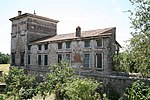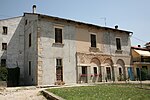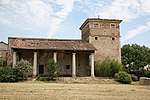Certosa di Pontignano
1343 establishments in Europe14th-century establishments in ItalyBuildings and structures in Castelnuovo BerardengaCarthusian monasteries in ItalyChristian monasteries established in the 14th century ... and 3 more
Churches in the province of SienaMonasteries in TuscanyRenaissance architecture in Tuscany

The Certosa di Pontignano (Pontignano Charterhouse), also known as the Certosa di San Pietro, is a Carthusian monastery and church in the neighborhood of Pontignano, within the town limits of Castelnuovo Berardenga, a few kilometers north of the city of Siena, in the region of Tuscany, Italy. The monastic complex, after the expulsion of the monks in 1810, passed through various hands, until it was acquired in 1959 by the University of Siena, and used for academic meetings, conventions, and also hotel and restaurant for events such as weddings and celebrations.
Excerpt from the Wikipedia article Certosa di Pontignano (License: CC BY-SA 3.0, Authors, Images).Certosa di Pontignano
Via Ronchi,
Geographical coordinates (GPS) Address Nearby Places Show on map
Geographical coordinates (GPS)
| Latitude | Longitude |
|---|---|
| N 45.369233333333 ° | E 11.359811111111 ° |
Address
Via Ronchi
Via Ronchi
36045
Veneto, Italy
Open on Google Maps








